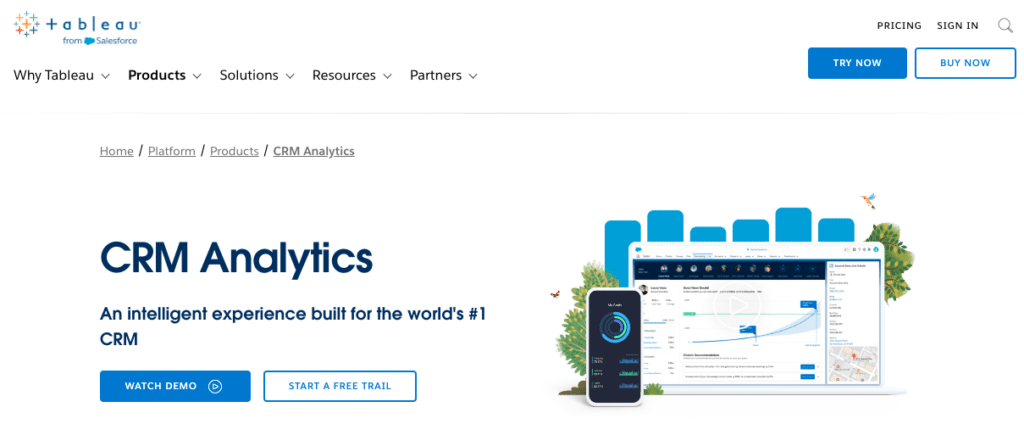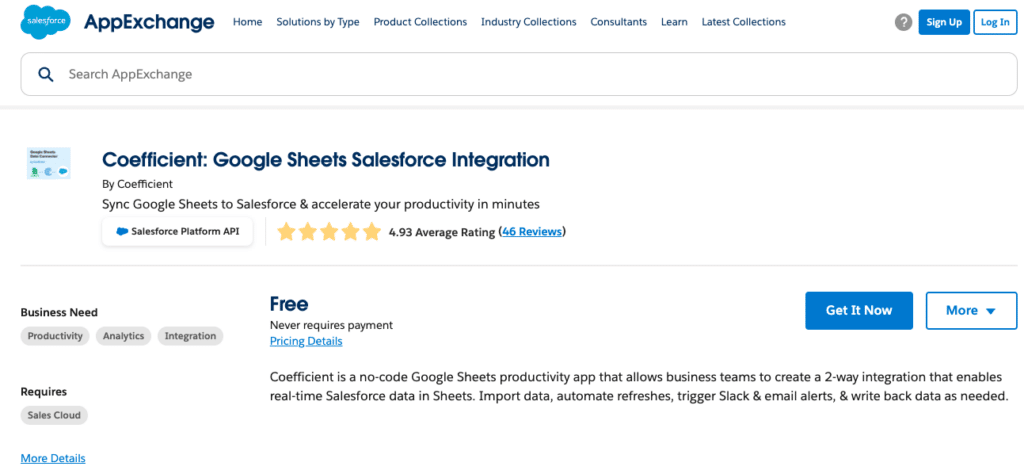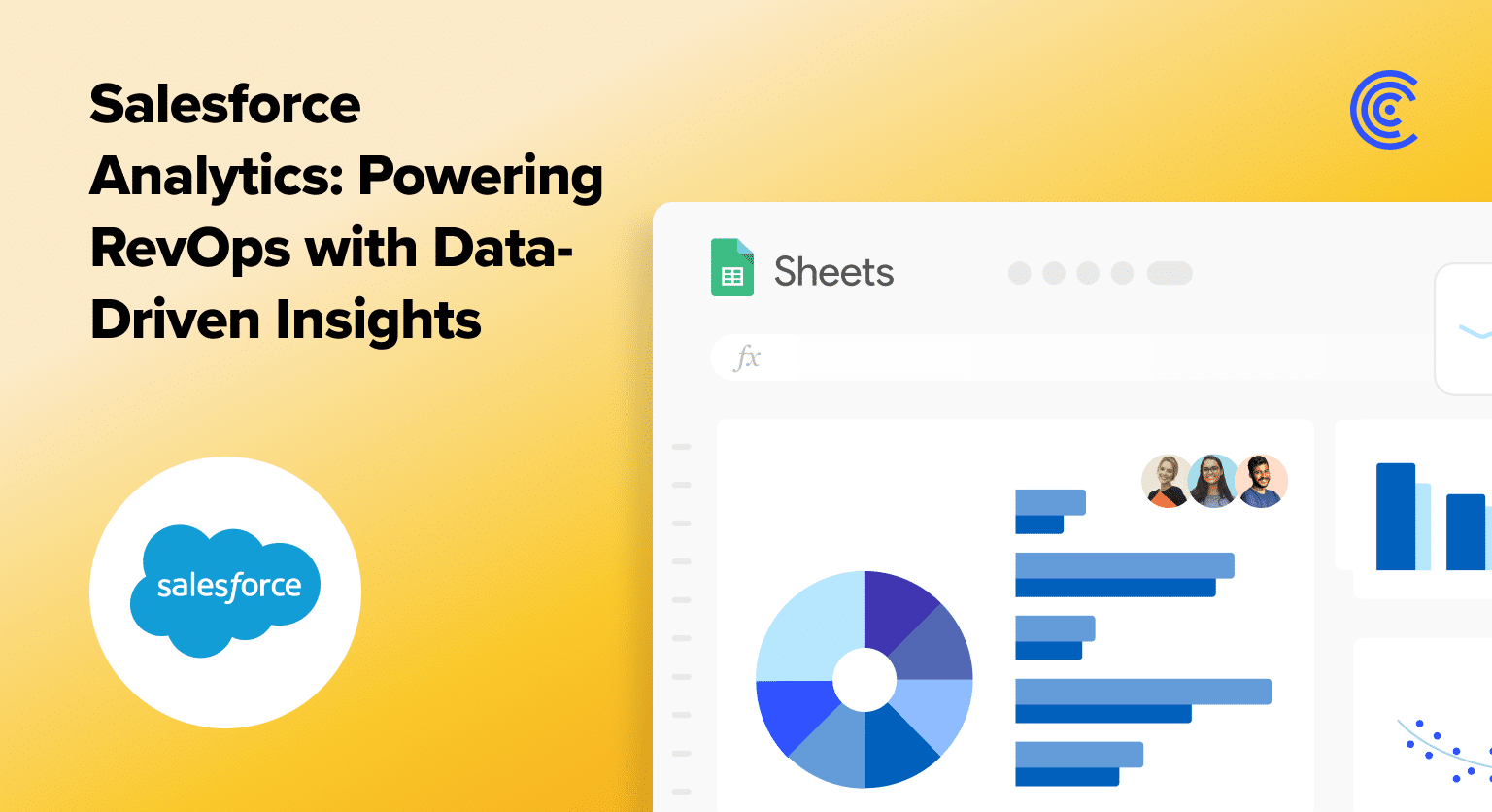Companies continually explore methods to harness data and enhance their sales strategies in fierce competition. A prime example of this is how Miro leveraged data-driven insights during their period of hypergrowth, utilizing Salesforce and Tableau to scale their operations effectively.
Without data-driven insights, sales teams might miss out on golden opportunities, leading to unmet sales targets and lowered customer satisfaction. Salesforce analytics is a game-changer in revenue operations (RevOps).
In this piece, you’ll discover how Salesforce analytics equips sales representatives with the resources to fine-tune their strategies using real-time customer data, ultimately leading to improved customer experiences and heightened retention.
What is Salesforce Analytics?
Salesforce Analytics, now known as Tableau CRM, is a powerful data analytics platform that provides organizations with valuable insights. Many industry professionals also prefer using Salesforce Analytics, with 74% of sales experts and 54% of marketers utilizing its features.

It enables businesses to analyze large volumes of data from various sources and uncover hidden patterns, trends, and correlations.
Here are the benefits of using Salesforce Analytics:
- Salesforce Analytics has robust data visualization capabilities. With interactive dashboards and reports, users can easily explore and visualize data, making complex information more accessible and understandable. This empowers sales teams to identify opportunities, monitor performance, and take corrective actions quickly.
- It provides actionable insights. Leveraging advanced analytics and machine learning algorithms can generate accurate sales forecasts, optimize sales processes, and enhance overall sales performance. This allows sales teams to identify trends, make data-driven decisions, and drive revenue growth.
- Salesforce Analytics promotes data-driven collaboration and alignment across teams. With a single source of truth, sales, marketing, and customer success departments can access and share real-time analytics, ensuring everyone is working from the same data. This fosters collaboration, improves coordination, and enhances overall business efficiency.
How Salesforce Analytics Works
Salesforce Analytics is a cloud-based platform designed to connect data from various sources, visualize it, and derive actionable insights. Here’s a breakdown of its functionality:
- Data Integration: Salesforce Analytics can pull data from both Salesforce and external sources. This includes CRM data, marketing automation tools, third-party applications, and more. The platform uses connectors and APIs to ensure seamless data integration.
- Data Preparation: Once data is imported, Salesforce Analytics offers tools to clean, transform, and structure the data. This ensures that the data is in the correct format and quality for analysis.
- Data Visualization: Users can create interactive dashboards and reports with prepared data. The platform offers a drag-and-drop interface, making it easy to visualize complex data sets. Users can customize charts, graphs, and tables to represent their data best.
- AI-Powered Insights: One of the standout features of Salesforce Analytics is its AI capabilities. Einstein Discovery, an integral part of the platform, provides automated insights, predictions, and recommendations. This AI-driven approach helps users identify trends, anomalies, and potential opportunities without manual analysis.
- Actionable Insights: Beyond visualizing data, Salesforce Analytics is deeply integrated with other products. This means that insights derived from the data can be directly translated into actions. For instance, a user can create a task for a sales rep within the same platform if a sales trend is identified.
- Collaboration and Sharing: Salesforce Analytics promotes collaborative decision-making. Users can share dashboards, insights, and reports with their teams. With features like ‘Conversational Queries,’ users can ask questions directly to the platform and receive answers through data visualizations.
Understanding the Role of Analytics in RevOps
Analytics and RevOps go hand in hand together, shaping the way businesses optimize their revenue operations for enhanced growth and efficiency.
Here are the different aspects of its role in RevOps:
- Unifying data from marketing, sales, and customer service teams. This unification often happens in BI tools or spreadsheets. With this consolidated data, companies can identify opportunities for cross-selling, upselling, and overall revenue optimization.
- Analytics enhances visibility across the revenue cycle. With the ability to track and monitor various touchpoints, businesses can gain a deeper understanding of their customer’s journey and identify bottlenecks or areas for improvement. This visibility allows for more targeted and effective sales strategies and drives revenue generation.
- Predictive analytics is another valuable component of RevOps. This helps to leverage advanced algorithms. Businesses can forecast future revenue accurately. This enables proactive decision-making and resource allocation, improving ROI and overall business planning.
Best Practices for Implementing Salesforce Analytics in RevOps
Leveraging Salesforce Analytics can be a game-changer. The following strategies can be best practices for seamlessly integrating Salesforce Analytics into your RevOps framework.
- Establishing data integrity and consistency: One of the crucial steps in implementing Salesforce Analytics in RevOps is ensuring data integrity and consistency. This involves cleaning and de-duplicating data, validating data sources, and implementing data governance practices. Businesses can make accurate and informed decisions based on the insights from Salesforce Analytics by having reliable, high-quality data.
- Integrating data sources for a unified view: This encompasses data from marketing, sales, customer service, and other departments. Businesses can comprehensively understand their customers and interactions across different touchpoints by consolidating data into a unified view. This facilitates the identification of cross-selling and upselling opportunities and drives revenue growth. Knowing which integrations to use can help with this.
- Training and user adoption strategies: Implementing Salesforce Analytics in RevOps requires effective user adoption. To ensure successful implementation, businesses should invest in comprehensive training programs for their teams. By providing proper training and support, businesses can empower their employees to utilize Salesforce Analytics effectively, improving data-driven decision-making and driving revenue growth.
Want to get started fast? Launch a pre-built Salesforce report template.

Stop exporting data manually. Sync data from your business systems into Google Sheets or Excel with Coefficient and set it on a refresh schedule.
Get Started

Image Source: Coefficient
Future Trends in Salesforce Analytics and RevOps
As the technology field continues to evolve, there are several future trends to keep an eye on in Salesforce Analytics and RevOps.
- AI and Machine Learning Advancements: Artificial intelligence (AI) and machine learning (ML) are increasingly integrated into Salesforce Analytics to enhance data analysis capabilities. With AI-powered algorithms, businesses can uncover valuable insights, automate repetitive tasks, and make more accurate predictions. This allows revenue teams to focus on strategic initiatives and drive revenue growth.
- Real-Time Data Processing for Immediate Insights: With the advancement in data processing technologies, businesses can now access real-time insights from Salesforce Analytics. Real-time data enables revenue teams to respond quickly to changing market dynamics, identify sales opportunities, and optimize sales strategies. This agility allows businesses to stay ahead of the competition and increase their revenue potential.
- Integrations with External Platforms and Data Providers: Businesses integrate Salesforce Analytics with external platforms and data providers to gain a holistic view of their customers. This includes social media platforms, customer support tools, and marketing automation platforms. Coefficient, a 5-star rated Salesforce ISV partner, offers a robust, two-way integration with Salesforce, allowing businesses to sync their data with Google Sheets effortlessly. If sales teams leverage these integrations, they can access customer data, personalizing their approach and providing superior customer experiences.

Challenges and Considerations
While Salesforce Analytics and RevOps offer numerous benefits, there are also several challenges and considerations that businesses need to address to leverage their potential fully:
- Data Privacy and Security Concerns: Data privacy and security become critical considerations as businesses collect and analyze large amounts of customer data. Organizations must store data securely and comply with privacy regulations such as GDPR and CCPA. Implementing robust security measures and providing regular employee training can help mitigate the risk of data breaches.
- Ensuring Scalability and Performance: As businesses scale and their data volumes grow, it is essential to ensure that Salesforce Analytics can handle the increased workload. Organizations must evaluate their infrastructure and make necessary adjustments to handle larger datasets and maintain high-performance levels.
- Addressing Potential Implementation Hurdles: Integrating Salesforce Analytics with existing systems can present challenges. It is essential to have a well-defined implementation plan, allocate the necessary resources, and address any potential roadblocks to ensure success.
- Continuous Training and Adoption: To fully maximize the benefits of Salesforce Analytics, businesses must invest in ongoing training and adoption efforts. Employees should be trained to effectively use the platform and leverage its features to gain actionable insights. Regular performance evaluations can also help identify areas for improvement and ensure that the platform is being used to its full potential.
Where to From Here?
By empowering businesses with data-driven insights, Salesforce Analytics is vital for successful RevOps strategies. With analytics, organizations can better understand their sales processes, customer behavior, and revenue opportunities.
To fully leverage the potential of Salesforce Analytics, businesses must embrace continuous innovation and adoption. This requires ongoing training and education to ensure employees have the skills and knowledge to use the platform effectively. Regular performance evaluations and feedback loops also play a crucial role in identifying areas for improvement and ensuring that the platform is being used to its full potential.
While there may be challenges and considerations such as data privacy and security concerns, scalability and performance, and potential implementation hurdles, with the proper measures in place, businesses can address these issues effectively and unlock the full power of Salesforce Analytics.


